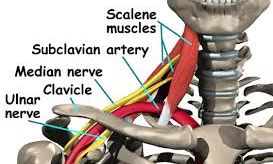Waking up to find one or even having both arms fall asleep at night is not only disconcerting but may also indicate underlying issues more significant than just an uncomfortable sleeping position. Often, this phenomenon points to potential problems within the scalene muscles located in your neck.
Understanding the Function of the Scalenes
The scalenes are a group of muscles situated on either side of your neck, extending down to the first two ribs. These muscles are divided into three sections: anterior, middle, and posterior. Each section aids in bending the head, flexing the neck, and elevating the ribs during breathing. Their proximity to the brachial plexus, comprising nerves like the ulnar and medial, which serve the arms, and the subclavian artery, which supplies blood to the arms, places them in a critical position that affects arm sensation.
How Tight Scalenes Can Lead to Arm Numbness
Sleeping posture plays a crucial role in the health of your scalenes. Stomach sleeping, which encourages the arms to be positioned overhead and the neck to remain rotated, significantly shortens the scalenes. This contraction puts pressure on the brachial plexus, leading to restricted blood flow and nerve impingement, manifesting as numbness or pain in both arms. Side sleeping can similarly compress these muscles on the resting side, causing the arm on that side to "fall asleep."
Preventing and Treating Issues with Scalenes
Improving your sleep posture is the first step towards mitigating these issues. Opt for back or side sleeping while ensuring proper head and arm alignment to minimize pressure on the scalenes. This can help when learning how to sleep with tight scalenes. Integrating upper trapezius stretches and chin tucks into your daily routine can also relieve built-up tension in these muscles.
For those suffering from weak scalenes or persistent numbness, our clinic offers specialized MedX treatment. This therapy targets the scalenes directly, strengthening them and alleviating symptoms more effectively than standard treatments.
Seeking Professional Help
If you frequently experience numbness in your arms during sleep, it may be time to consult with a professional. Our chiropractic services, including adjustments, physiotherapy, and MedX treatments for weak scalenes, are designed to address these specific issues, ensuring a better night's sleep and a healthier, more comfortable life.
